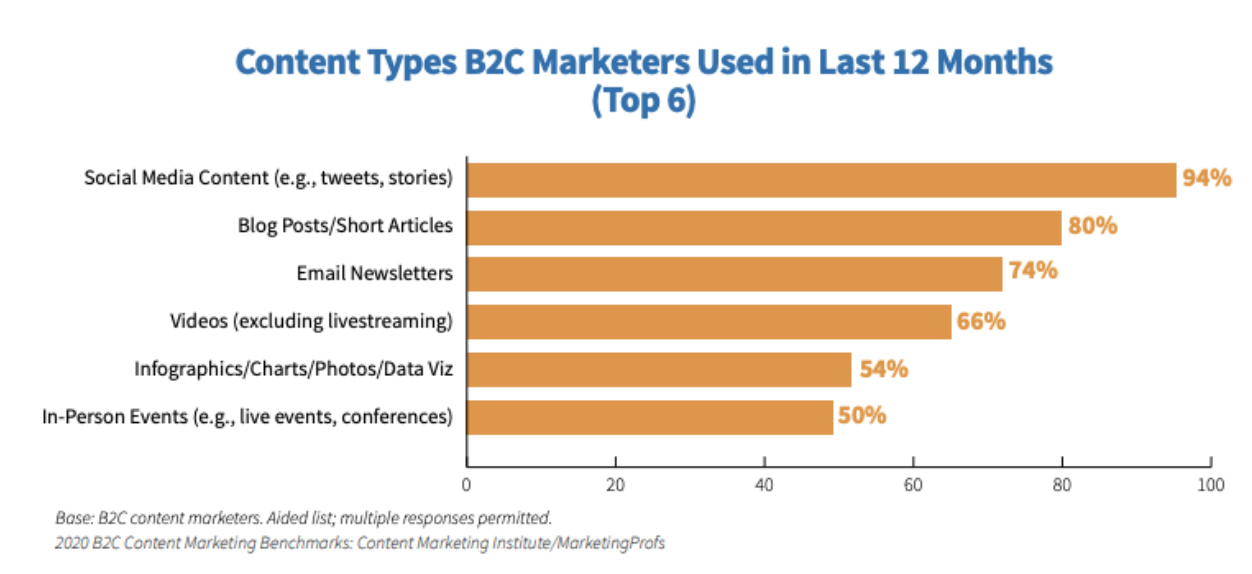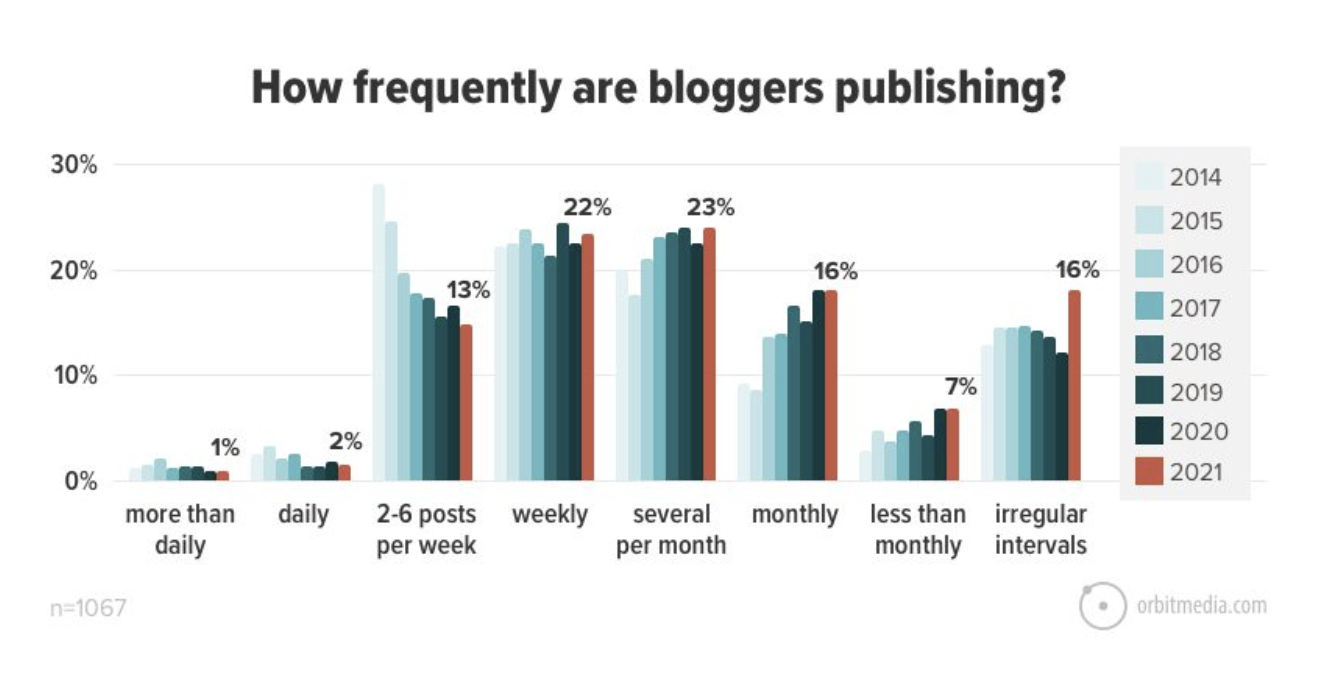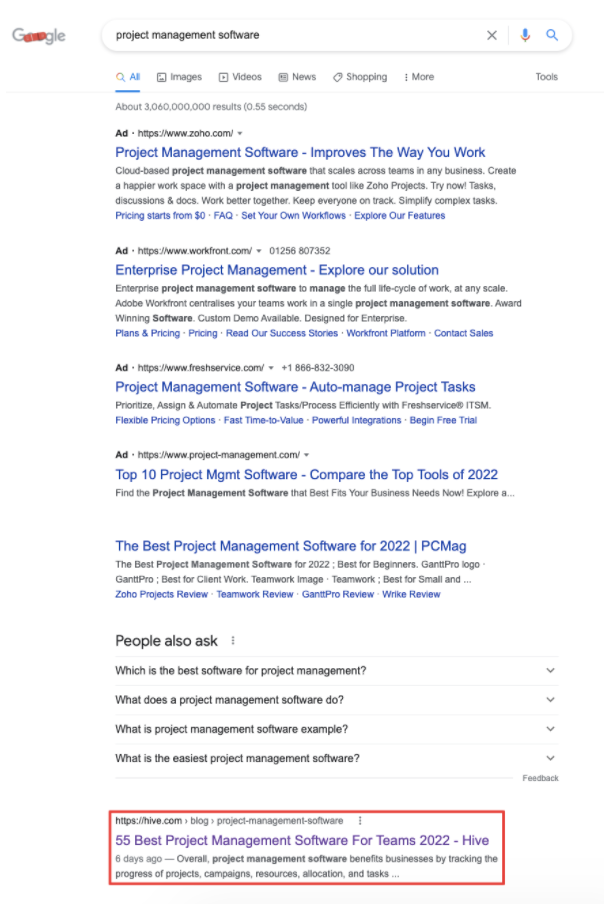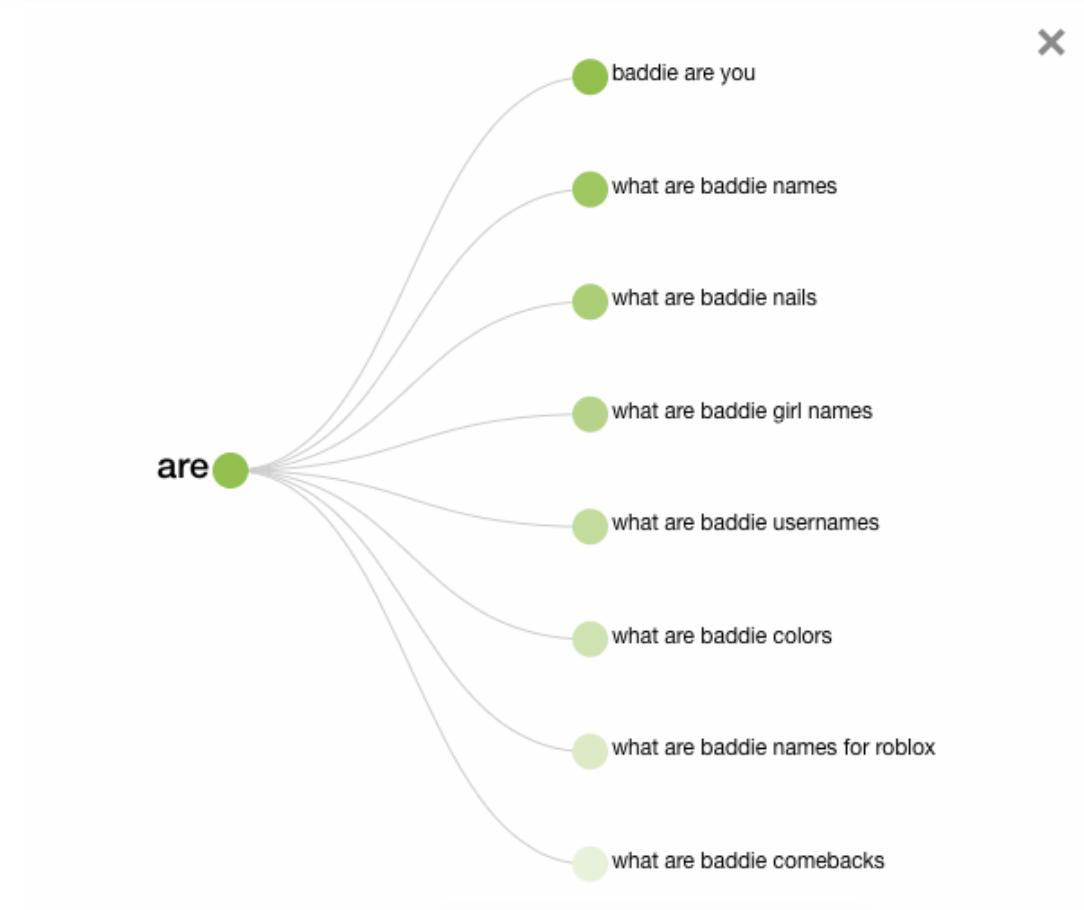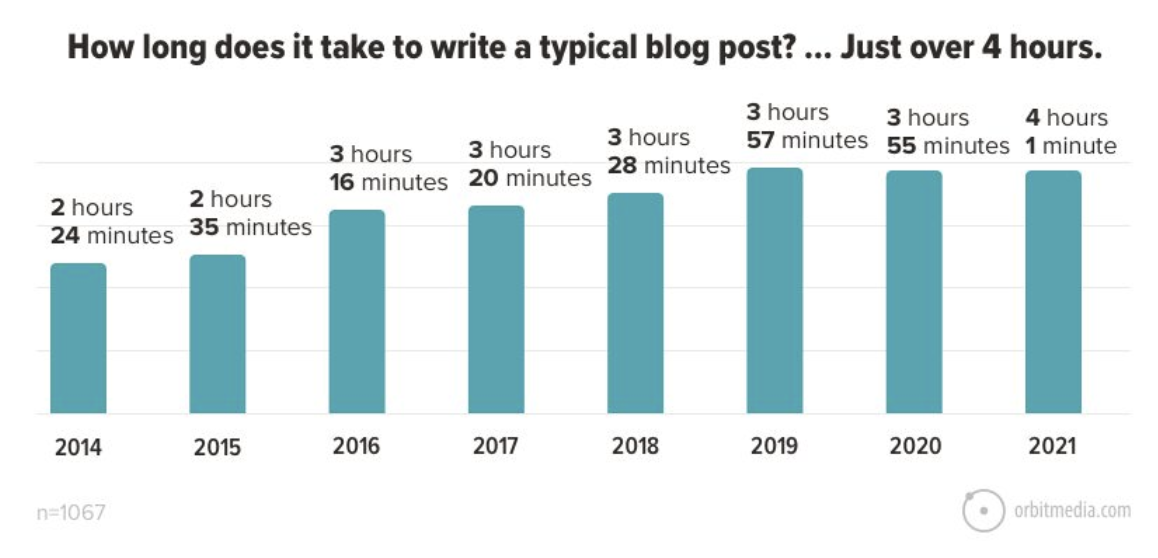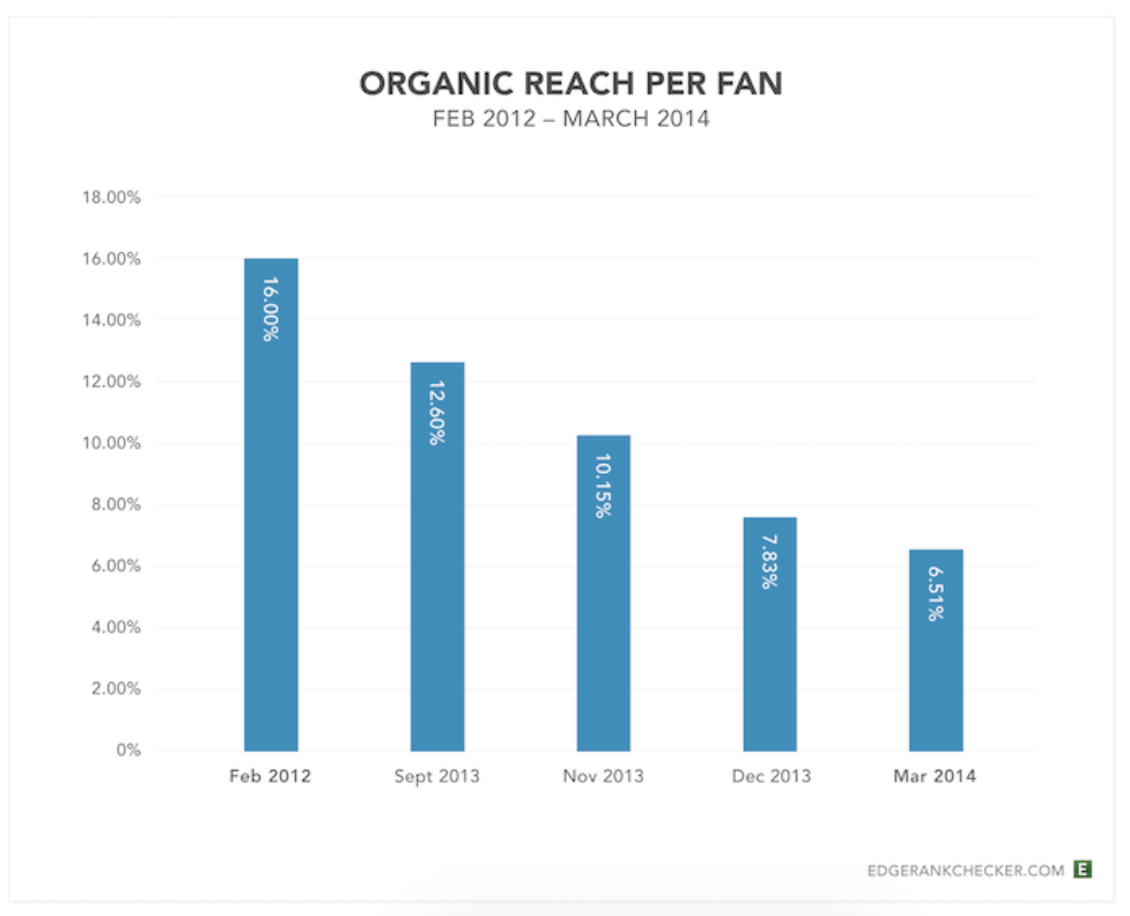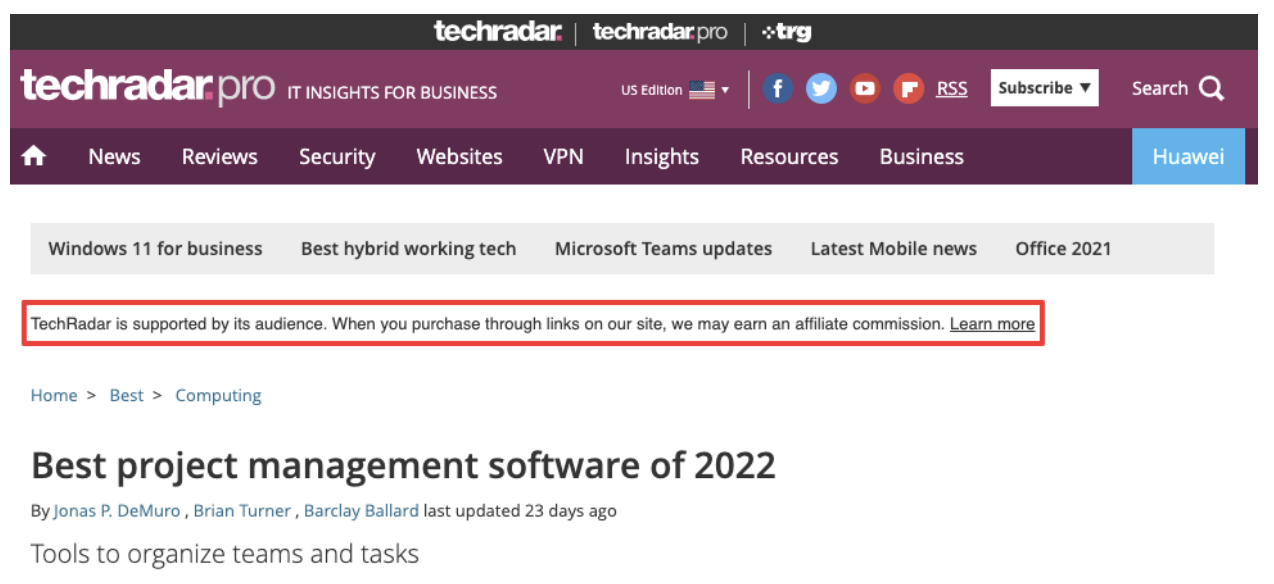Blogging is one of the oldest digital marketing tactics, tracing its roots way back to the launch of Links.net in the mid-1990s.
That makes it practically geriatric in online terms.
But while lots of sexy new marketing channels and tactics have emerged since then, blogging is still as popular as ever.
According to the Content Marketing Institute, four in five B2C marketers write blog posts and short articles, making it the second most popular B2C format behind social media content:
Meanwhile, B2B-skewing research from Orbit Media found 23% of marketers publish blogs several times a month and 22% do so weekly, while 13% publish two to six posts every single week:
In short, it seems blogging is an extremely valuable tactic across multiple industries and audiences.
Not convinced? Check out these nine underappreciated benefits of blogging for business:
1. Blogging Is Great for SEO (And Not Just In the Obvious Way)
Don’t worry, we’re not claiming SEO is one of the “underrated” benefits of blogging.
With 53% of all website traffic coming from organic search, it’s probably the single biggest motivation for writing blog posts.
The main SEO benefits of blogging are clear. It allows you to:
- Target high-value keywords
- Spread “link juice” across key pages through internal linking
- Acquire backlinks from high-authority websites
Countless articles have been written about the obvious business blogging benefits, so we’re not going to waste your time (or ours) writing about them here.
However, there’s a lesser-known benefit that’s definitely worth talking about: business blogging helps you claim free search engine real estate.
To demonstrate the point, let’s look at an example. Take the keyword, “project management software.”
As you can imagine, it’s a much-sought-after term. Google Ads data shows it generates an average of 22,200 searches every single month, with PPC advertisers bidding on that term paying between $12.64 and $67.68 per click.
Nearly $70 per click, with no guarantees the clicker is going to buy from you, or even spend any time exploring your website? That’s far too expensive for all but the biggest brands to target.
But guess what? The second-highest-ranked organic search result, beneath all the adverts and “people also ask” questions, is a humble blog post:
According to Ahrefs, that one blog post brings in 11,000 organic monthly visitors and is worth $168,000 a month to Hive.
And it does all that for free.
As a separate point that’s somewhat harder to quantify, appearing at the top of the organic results gives your business greater credibility.
Theoretically, you could be the highest-ranked ad by simply outbidding your competition. (Don’t worry, PPC marketers: we know there’s actually a lot more to it than that!)
But with organic search, there’s really no way to game the system. If you’re on the front page of SERPs, it’s because Google deems you a highly credible source. That’s amazing for your brand.
2. Build Connections With Your Audience
Your audience has questions. A lot of questions.
With an estimated 5.6 billion searches made on Google every day, the opportunities to respond to those queries and build meaningful connections with your audience are practically limitless. And blogging is one of the best ways to do it.
Clearly, only a tiny proportion of those queries will be relevant to would-be customers. According to Google’s 2021 Year in Search, some of the most popular questions of the last 12 months include:
- How to be eligible for stimulus check
- How to style straight leg jeans
- How to be a baddie
Numbers two and three could be super relevant to a fashion brand. (Although let’s be honest: if you’ve got to ask Google how to be a baddie, you’re never going to be one. Sorry.) And the stimmy question might be a useful topic for a personal finance-related business.
But you don’t have to wait for Google’s end-of-year review to find relevant queries. Tools like Answer the Public help you seek them out at any time of year.
Of course, answering those questions might not lead to many (or any) immediate sales
But it’ll position you as a trusted resource that understands your audience’s pain points, which could lead to a bunch of sales down the line.
3. Generate “Passive” Leads
Most lead generation strategies are “active.”
They might involve you creating a lead magnet, promoting it via social media ads, and building a dedicated landing page to capture names and email addresses.
By their very nature, lead magnets tend to be assets that can’t be navigated to from within your website. PDFs are a popular format, but they also include things like videos, audio files, and spreadsheets.
You typically don’t want those assets to be listed in SERPs, because that way, prospects could bypass your lead capture form altogether. In effect, you’d be giving it away for free.
As a result, the second you switch off your social ads, that campaign will stop bringing in leads.
Similarly, consider email marketing, regularly applauded for delivering the highest ROI of any marketing channel
Sure, email can be incredible, but you have to keep sending emails to keep extracting value. No one’s going to trawl back through their inbox to find an email you sent six months ago.
One of the benefits of blogging for business is that everything you create is available on your website all the time, whether or not you’re actively promoting it.
That means it can continue bringing in “passive” leads weeks, months, or even years after you originally published it.
In 2021, the average blog post took just over four hours to write, according to Orbit Media:
Arguably no other channel offers such a positive long-term impact for such a small upfront investment.
4. Form a Foundation for Future Content
Unless your blog posts solely consist of stream-of-consciousness ramblings, chances are you’ll do plenty of research before (and maybe during) the writing process.
To get maximum value from all that research, you can repurpose your best blogs into other types of content. For instance:
- A “how to” guide makes a strong foundation for an explainer-style YouTube video or webinar
- Any blog with plenty of original opinion will play on LinkedIn
- Statistics and visual elements make for highly impactful social post
Think of it this way: every time you write a blog post, you’re not just writing a blog post. You’re also streamlining and speeding up the content creation process for multiple other platforms.
5. Decrease Your Reliance On Third-Party Platforms & Algorithms
Social media platforms give you access to a huge audience. In 2020, there were more than 3.6 billion social media users worldwide; that number is expected to exceed 4.4 billion by 2025.
So social media is great, right?
Well, not necessarily.
The problem with relying on third-party platforms to reach your audience is that those platforms don’t have your best interests at heart.
They exist to make money — for themselves and their shareholders. They absolutely do not exist to guarantee you a regular, consistent stream of leads and revenue.
You’ve likely heard that over the years, Facebook has been gradually reducing organic reach — that is, the proportion of a page’s followers who organically see posts from that page in their news feed.
In early 2012, followers saw an average of 16% of posts from the pages they followed. By March 2014, that proportion had dropped to just 6.5%.
By contrast, one of the key benefits of blogging is that it gives you total ownership of your audience. No more relying on an algorithm you’ll never understand.
If people like what you produce, they can bookmark your blog and subscribe to your newsletter, and there’s nothing any third-party platform can do to get in the way!
6. Blogging is Thought Leadership (And Buyers Love Thought Leadership)
Blogging is perhaps the simplest way for brands to demonstrate thought leadership. It’s easier to produce than an ebook or infographic, and more accessible than a podcast or video.
Which is good news for business bloggers, because there’s lots of evidence to demonstrate how much buyers love thought leadership
Figures from LinkedIn show that decision-makers are spending more time each year reading thought leadership content, with most doing so for at least one hour a week. So it’s no surprise that 53% of marketers are adding more thought leadership to their content strategies.
From a thought leadership perspective, there are actually multiple benefits of blogging.
Firstly, and most obviously, it demonstrates your expertise on a given subject, which in turn makes it more likely that people will buy from you.
Secondly, thought leadership makes it easier for you to land high-profile guest articles, speaking engagements, podcasting appearances, and even book deals.
It’s really pretty simple: if you want to be published on a certain website or appear on a certain podcast, you can look for:
- The content types they publish or discuss
- Topics they’ve covered previously
- Topics they haven’t covered
- Angles that appeal to their target audience
- Controversial or engaging subjects likely to spark debate among their audience
By speaking to those topics on your own blog, it’ll be immediately obvious to the publishers and creators you approach that you can add real value to them.
That makes you more likely to get booked for appearances or commissioned for guest posts.
In short, it’s all about building a connection between the content on your site and the opportunities you want to leverage in future.
7. Blogging Fuels Sales Cycles
Unlike the more general benefits of blogging we’ve discussed so far, this one’s more relevant to B2B audiences.
Blogging is an absolute godsend for sales teams (provided you blog about the right topics).
Why? Because it equips them with the content they need to strike up conversations, explain key features and benefits, handle objections, and communicate your company’s perspective.
Sure, your reps should be smart enough to do that for themselves.
But their time is precious, with almost two-thirds of it spent on non-revenue-generating activities. So the last thing you need is for your sales team to spend the rest of their time repeating the same conversations over and over again when you could cover the answers in a single blog post.
One more thing on this point: you’ve probably heard that it takes multiple touchpoints to close a deal (eight touches, by one estimate).
It’s a simple matter of human nature. Whether we’re spending $10 on a burger or $10,000 on a new software product, we want to feel comfortable with our buying decision.
The more useful content you publish, the more potential touchpoints you generate with prospects.
Ideally, each piece of content will be so useful that they’ll come back to it multiple times, leading to even more touches.
All of which position your sales team to close the deal faster.
8. Earn Money Through Affiliate Marketing
Business blogging is typically seen as a way to earn money indirectly by guiding prospective customers through the buyer cycle until they’re ready to commit.
But it can also be a direct way to earn money.
With affiliate marketing, brands can use their content to promote third-party products or services. It’s a pretty simple process:
- Sign up for a brand’s affiliate program
- Write about that brand’s product(s), incorporating your unique affiliate link
- Every time one of your readers clicks your link and makes a purchase, you earn a commission
Easy money, right? That’s why some of the biggest names on the internet are making money from affiliate marketing — big names like TechRadar:
9. Build a Revenue-Generating Publication
Affiliate marketing isn’t the only way to turn a business blog into a revenue-generating asset.
If your content is engaging enough and has a sufficiently valuable audience, it could grow into a regular source of income, above and beyond any affiliate commissions you earn.
Red Bull Media House (RBMH) is a high-profile example of this.
While Red Bull’s core business is energy drinks, RBMH — which creates content on sports, lifestyle, and culture — has become a fully fledged media company that publishes across TV, mobile, digital, audio, and print.
To be clear, content creation isn’t just a vanity project or a brand-building exercise for Red Bull: its content house generated revenues of more than $500 million in 2020, according to DNB.
That’s a lot of energy drinks!
Bonus Benefit: Increase Your Brand Value
Every business has some kind of intellectual property that could make them more valuable in the event of a merger or acquisition.
Some of that intellectual property will be hidden away in the background — systems and processes; proprietary tools; strategies.
And some of it will be content. Content that actually creates value within the business, thereby increasing its valuation in the event of a merger or acquisition.
Imagine a business buyer evaluating two potential acquisitions. The two businesses make similar products for similar audiences and generate similar revenue, but Company A has a huge library of high-value content, whereas Company B doesn’t.
In this instance, the value of Company A’s content assets could ultimately tip the scales in its favor.
The Benefits of Blogging Long Term
It’s easy to dismiss the impact of blogging. It requires some upfront investment in time to come up with an interesting topic and write it up in a way that’s engaging and adds value.
Not only that, but unless you’re prepared to commit some ad dollars or have a big social following, it could take months — even years — to produce results.
However, as you can see from this article, the benefits of blogging can be substantial and wide-ranging.
Sure, not every blog post you produce will work out as planned. Some might fall flat. But the more (high-quality) blogs you publish, the better the results will be.
Want to learn how these benefits can be applied to your business? Get in touch with Content Conquered. We’d love to hear from you!

